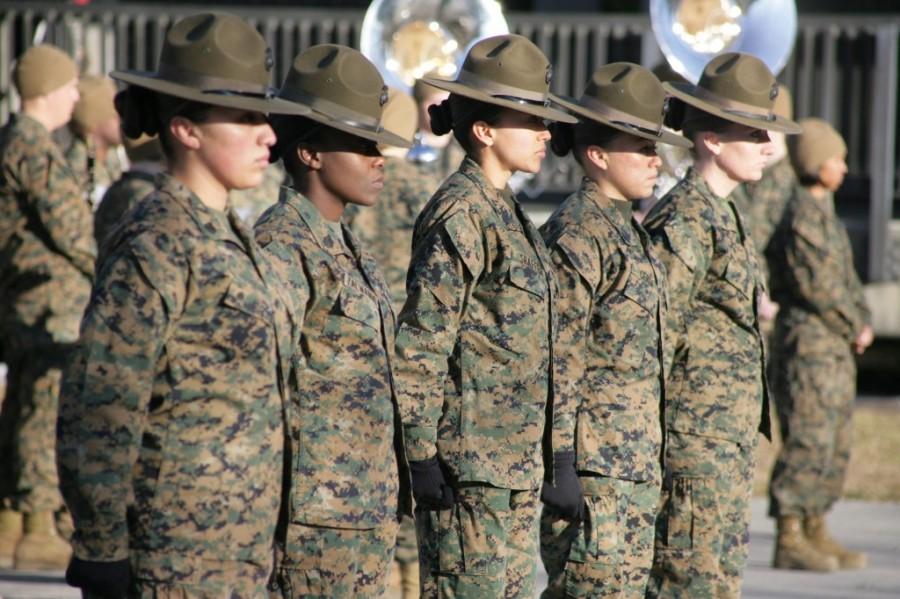Fighting for Combat
March Issue: Social Justice
On Thursday, December 3rd, 2015, the United States Secretary of Defense, Ashton B. Carter, announced that the Pentagon would open all combat jobs to women. This action allows women to take up certain roles in the army that they were not able to occupy before. For example, women in combat may now drive tanks, fire mortars, serve as Army Rangers and Green Berets, work as Navy SEALs, be Air Force parajumpers, and occupy many more positions that were previously only open to men. This change is a result of a deadline set three years ago by the Obama administration to introduce women into all combat in the military. So far, the Navy and Air Force have opened all roles to women in combat and the Army is working on the increased integration of women. While many are overjoyed by this step towards equality in the military, some are still hesitant to support the integration of women into these military roles.
Over the last eleven years, roughly 200,000 women have gone to war in Iraq and Afghanistan. Although this only makes up a small percentage of the 2.5 million soldiers who have fought in Iraq and Afghanistan, it shows the significant role some women have played in fighting for the United States. Many students at Wilmington Friends support the decision to open more roles to women in combat, because of the significant roles that women have played in the military already. When asked her opinion about this change in policy, Victoria Schroeder ’18 responded, “It’s awesome; It means that warfare is no longer based on the gender stereotype that men are better fighters because they’re manley. Now it’s about being strong and perceptive.” Some are against women occupying some roles in the military because they do not believe women are as strong as men; however, women still need to complete the same training and tests as their male counterparts in order to join the military. Integrating women into more combat roles also allows the US military to overcome certain obstacles. For example, male service members are not allowed to look at or speak to Afghan women on patrol or touch them to search for explosives or weapons. By allowing women to occupy more roles, more opportunities are open to the U.S. military.
The decision to open all combat roles to women, however, was not arrived at without resistance or criticisms. For example, Marine General Joseph Dunford, who is also the chairman of the Joint Chiefs of Staff, stated that some roles should be limited to men. The internal Marine Studies found evidence that all-male units performed better in combat than mixed groups. For instance, all male squads were found to be faster on hikes, gorge crossings, and cliff ascents than groups of men and women. Similarly, there is evidence that male Marines have higher hit percentages than women. Thirdly, the Marine corps stated that women are also more likely to be injured in training than men. In recruitment training, women were almost twice as likely to be injured than men were. Also, three times more female soldiers were evacuated from combat than male soldiers; of those women evacuated for medical reasons, 74 percent were because of pregnancy related issues. One anonymous faculty member expressed “I think that men and women are equally able, but I do not believe women should be allowed on combat missions with men. If romantic relationships develop between men and women in combat, it could be dangerous for the mission.” Due to all of these reasons, many people are hesitant to support the integration of women into military roles that were previously only available to men.
While some believe that opening up more roles in the military to women is just a response to a demand for equality, it is really a step towards utilizing the skills of women and giving new opportunities to the US military. Jordan Carter ’17 summarizes the situation best when he expresses, “I endorse women being able to occupy the same military roles as men. I have a little sister and she should be treated fairly.” While on one hand many are against women in combat, many others believe that if women pass the same training and exams that men pass, they should be able to occupy the same positions in the military. Either way, it will be interesting to see the long-term effects of this change in United States policy.



































